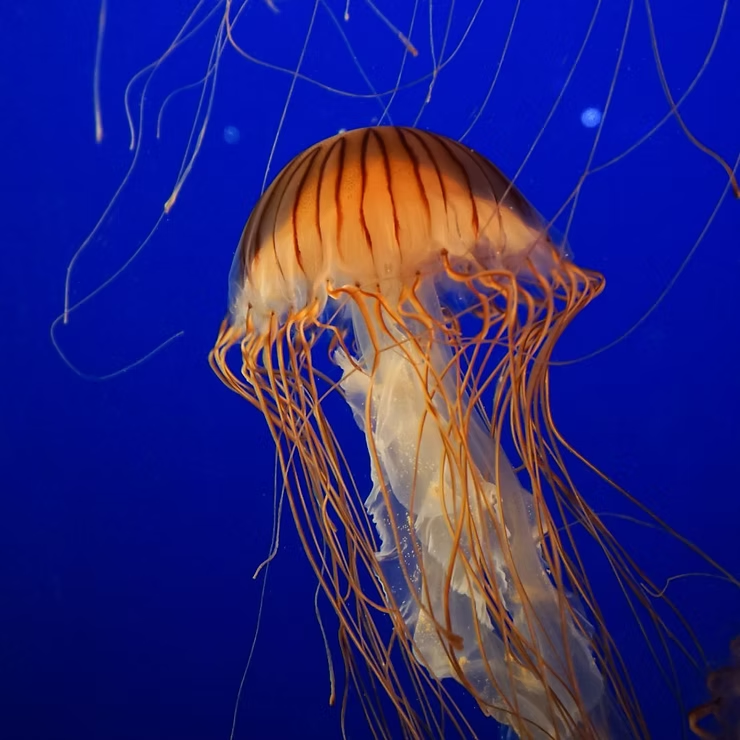Jellyfish: Graceful Yet Mysterious Ocean Dwellers
Jellyfish have drifted through the seas for millions of years, mesmerizing us with their elegance while reminding us of nature’s resilience. Their translucent bodies, pulsing movements, and adaptability to diverse environments make them symbols of mystery and survival. Beyond their beauty, they carry spiritual and cultural significance, play crucial roles in marine ecosystems, and inspire both science and art. Exploring their world allows us to reflect on our own adaptability, sensitivity, and ability to flow with life’s currents.
The Dance of Drifters
Going with the Flow
Jellyfish don’t fight the tides; they surrender to the ocean’s currents. This effortless dance teaches us the value of release, harmony, and adaptability. Their movement encourages us to stop resisting life’s changes and instead trust in the journey unfolding before us.
Lessons in Letting Go
- Embrace challenges with a softer touch rather than force.
- Release what no longer serves you to find clarity and balance.
- Flow with natural rhythms rather than fighting against them.
Symbolism and Spiritual Meaning
Ancient Wisdom
Across cultures, jellyfish symbolize surrender, mystery, and resilience. Their presence in myths and stories often mirrors human life cycles, urging us to adapt with grace and trust unseen forces shaping our paths.
Sensitivity as Strength
Far from weakness, sensitivity is a jellyfish’s guiding superpower. Their tentacles sense subtle changes in water and movement, teaching us that awareness and intuition can be powerful tools for navigating life.
Jellyfish in Culture and Art
Legends describe jellyfish as messengers from the deep, symbols of change, or reminders of hidden strength. Artists and writers use their translucent forms to evoke vulnerability, fluidity, and resilience. Whether in poetry, painting, or folklore, they continue to inspire reflections on life’s mysteries.
Habitats and Roles in Ecosystems
From Shores to the Abyss
Jellyfish thrive from sunlit coastal waters to the pitch-black depths of the ocean. Their survival across such extremes highlights their remarkable adaptability.
Ecological Importance
- Predators of plankton and small fish, balancing marine populations.
- Food sources for turtles and larger sea animals.
- Contributors to nutrient cycles, enriching ecosystems after they decompose.
The Lifecycle of a Jellyfish
Jellyfish undergo dramatic transformations, starting as larvae, attaching as polyps, and then budding into free-swimming medusae. This cycle of birth, bloom, and renewal symbolizes transformation and resilience, mirroring our own journeys of growth and change.
Encounters and Symbolic Messages
Meeting a jellyfish—whether in the sea, in dreams, or symbolically—invites reflection. Their gentle glide reminds us to adopt flexibility, release control, and embrace sensitivity as guidance. These encounters often carry spiritual meaning, encouraging exploration of inner depths and emotional clarity.
Conservation and Human Impact
Though resilient, jellyfish face challenges from climate change, pollution, and habitat degradation. Rising sea temperatures and plastic waste threaten their delicate balance within ecosystems. Protecting them also safeguards the ocean systems they support.
- Reduce plastic use to protect their habitats.
- Support marine protected areas and sustainable policies.
- Engage in conservation awareness and local action.
Scientific Discoveries
Research reveals astonishing genetic resilience in jellyfish, including regenerative abilities and unique proteins. These insights are shaping studies in medicine, neurology, and biotechnology while deepening our understanding of ocean health and evolution.
Conclusion
Jellyfish embody a paradox: fragile yet enduring, mysterious yet enlightening. They inspire us to let go, adapt, and move with life’s currents. As guardians of ecological balance and symbols of inner wisdom, jellyfish remind us to approach both the ocean and our lives with respect, openness, and grace.

